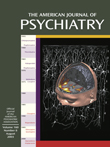Early Risk Factors for Violence in Colombian Adolescents
Abstract
OBJECTIVE: Violence and homicide are more prevalent in Colombia, South America, than in the United States, but the role of psychosocial factors in the violent behavior of Colombian adolescents remains unclear. The objective of the study was to identify personality, familial, peer, and ecological variables associated with violence in Colombian adolescents. METHOD: A survey of adolescents was conducted in 1995–1996. A standard self-report measure was adapted to ensure linguistic and cultural relevance. A total of 2,837 adolescents ages 12–17 years from various self-reported ethnic groups were randomly selected from the community in three Colombian cities: Bogota, Medellin, and Barranquilla. Eighty percent of eligible adolescents agreed to participate. Data were collected concerning the adolescent’s personality attributes, family characteristics, peer characteristics, and ecological/cultural factors, including the availability of illicit drugs and the prevalence of violence in the community. The dependent variable was the adolescent’s self-reported frequency of violent behavior. RESULTS: Violence directed at the adolescent and the adolescent’s own drug use were both more highly correlated with the adolescent’s violent behavior than were other risk factors. Significant risk factors of less importance included tolerance of deviance, peer drug use, peer deviance, and exposure to violence on television. CONCLUSIONS: The results supported a model in which violent behavior was correlated independently with a number of risk factors from several domains. The findings point to the use of specific intervention procedures for adolescents to prevent their own subsequent acts of violent behavior.



